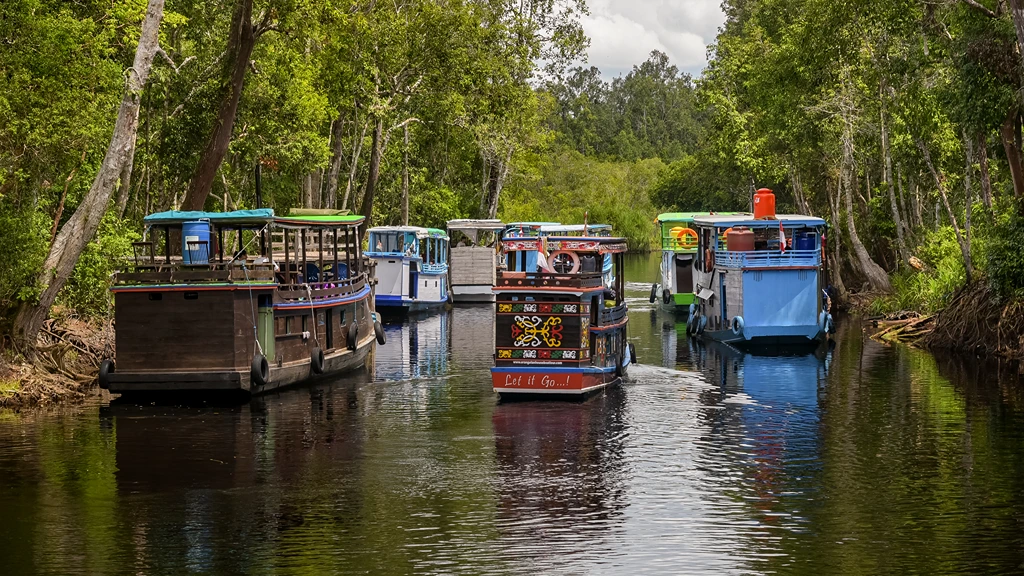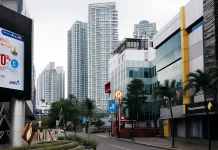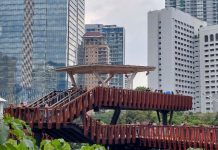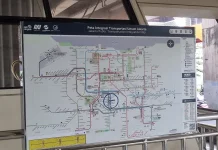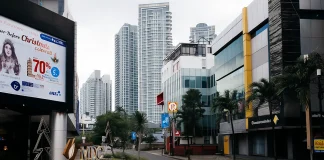If you are a nature lover then you have to visit Indonesia’s national parks which not only offer beautiful scenery but also the perfect ambiance for relaxing and unwinding.
Here are our recommended 9 national parks in Indonesia:
1. Taman Nasional Komodo (East Nusa Tenggara)
You’ve got to visit Komodo National Park at least once in your life. It’s the natural habitat of the Komodo dragon, the biggest lizard in the world. You can go trekking on Rinca and Komodo Islands to see them in the wild. The park covers 1,733 km² and also has stunning savannah landscapes, the famous Pink Beach, Padar Island, and Manta Point. Don’t miss out on snorkeling or diving here—it’s known for its rich marine biodiversity.
 How to Get There:
How to Get There:
Flying directly to Labuan Bajo is the fastest and most popular option.
1. By Plane:
- From Jakarta (Soekarno-Hatta Airport) to Labuan Bajo (Komodo Airport – LBJ):
Around 2.5 hours. Airlines like Batik Air, Citilink, or Super Air Jet fly this route. - From Bali (Denpasar) to Labuan Bajo (LBJ):
About 1 hour. We can fly with Wings Air, Citilink, or NAM Air.
2. By A Phinisi Boat or Speedboat:
- From Labuan Bajo to Labuan Bajo harbor, Komodo National Park:
Speedboat: Takes around 30 minutes to 2 hours depending on the island. - From Labuan Bajo to Labuan Bajo harbor, Komodo National Park:
Phinisi boat trips: Usually 1 to 3 days, and there are lots of tour packages to choose from.
Tips for Visiting Komodo National Park:
- Book your tour early, especially during peak season (June–August).
- Choose a trusted and licensed tour operatorin Labuan Bajo.
- Bring cash because some islands don’t have ATMs.
- Pack smart: comfy footwear, hat, sunglasses, sunblock, lightweight trekking shoes, and a dry bag for your electronics.
- Always go with a rangerwhen trekking.
- Bring a waterproof cameraif you plan to snorkel or dive.
2. Taman Nasional Bromo Tengger Semeru Park (East Java)
Bromo Tengger Semeru National Park in East Java is one of the coolest natural spots you must visit. Here, you can enjoy stunning views of the famous Mount Bromo with its wide sea of sand and a crater that always releases light smoke. One of the most awaited moments for tourists is watching the sunrise from Penanjakan Hill—where the sky slowly changes color and Mount Bromo appears from the mist. It’s magical! If you love adventure, you can also hike Mount Semeru, the highest peak on Java Island.
 How to Get There:
How to Get There:
- Public Transporation:
- From Surabaya or Malang Via Probolinggo – Cemoro Lawang (most popular route)
1.Take a train or bus to Probolinggo Station
2.Then take a local minibus (angkot) or rent a jeep to Cemoro Lawang (2–3 hours)
3.From Cemoro Lawang, you can start a jeep tour to Penanjakan, the Sea of Sand, and Mount Bromo crate - From Surabaya or Malang Via Lumajang – Ranu Pane (for Semeru hike only)
1.From Lumajang, take a rented car or motorcycle taxi (ojek) to Ranu Pane
2.From Ranu Pane, start your hike to Semeru (need a SIMAKSI permit)
Tips for Visiting Bromo Tengger Semeru National Park:
• The best time to visit is during the dry season (May – September) because the weather is clearer.
• Avoid the rainy season (October – March) since hiking paths can get slippery and dangerous.
• Wear warm clothes like thick jackets, scarves, gloves, and beanies—especially for sunrise at Penanjakan. Also bring trekking shoes, sunglasses, a mask, and a flashlight or headlamp.
• Choose a place to stay in Cemoro Lawang (Probolinggo), Ngadas (Malang), or Ranu Pane (if you’re hiking Semeru). Book early, especially during holidays.
Tickets and Permits:
• Tickets must be booked online at the official website: https://bookingbromo.bromotenggersemeru.org
• Ticket prices :
Weekday: About Rp29,000 (Indonesians) / Rp220,000 (foreigners)
Weekend: About Rp34,000 (Indonesians) / Rp320,000 (foreigners)
• Hiking Mount Semeru requires a SIMAKSI (Conservation Area Entry Permit)
*Ticket prices may change, check the site
3. Taman Nasional Way Kambas (Lampung)
Way Kambas National Park in Lampung is a great place to see Sumatran elephants and other rare animals in their natural habitat. There’s an Elephant Training Center where you can learn about elephants and watch fun interactions with tame ones. You can also join a nature safarito spot wild animals like tapirs, Sumatran tigers, and various rare birds that live in the swamp forests and lowlands.
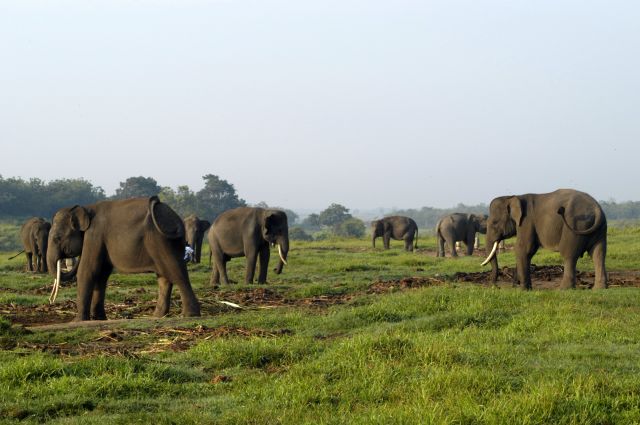
How to Get There
1. By Private Car or Rental:
- From Bandar Lampung:
It takes about 2.5–3 hoursto reach Labuhan Ratu, the main entrance to the park.
2. By Public Transport:
- From Rajabasa Terminal in Bandar Lampung:
1.Take a bus to Metro or Way Jepara
2.Get off at Simpang Tridatu or Trikarya
3.Continue by motorbike taxi (ojek) or local transport for about 13 km to the park gate. - From Jakarta:
1.Travel by bus or car to Merak Port
2.Take a ferry to Bakauheni
3.Continue driving to the park via Bandar Lampung
Permits and Entrance Fees
Entry ticket costs around Rp 20,000–50,000for locals (more for international tourists)
Always register at the guard post. Don’t enter without permission
Tips for Visiting Way Kambas
• Best time to visit is during the dry season (June to September)
• Avoid the rainy season, as the roads can be muddy and hard to access
• You can stay overnight in nearby towns like Metro or Sukadana, or at Way Kambas Resort / Elephant Center
• Bring mosquito repellent, hat, sunscreen, long clothes, and comfortable walking shoes
• Carry cash since ATMs are rare near the park
• Hire a local guide because they know the area and can help you spot wildlife
4. Taman Nasional Lorentz (Papua)
Lorentz National Park in Papua is perfect for anyone who loves extreme adventures and exploring wild nature. Imagine a place where you can find every kind of ecosystem—like the ocean, swamps, tropical rainforests, and even a glacier on Puncak Jaya, which is the only tropical glacier in Indonesia! Besides the amazing landscapes, you can also meet indigenous Papuan tribes and learn about their unique cultures. It’s an unforgettable experience that shows just how rich Indonesia’s nature and traditions are.
 How to Get There:
How to Get There:
1.By Plane:
• Route 1: Jakarta → Jayapura → Wamena
1.Fly from Jakarta to Jayapura (about 5.5 hours), then another 45-minute flight to Wamena.
2.From Wamena, take a 4WD vehicle for around 3 hours to Danau (Lake) Habema, then continue trekking to places like Puncak Jaya.
• Route 2: Jakarta → Timika
1.Fly from Jakarta to Timika (around 5 hours, possibly with a stop in Makassar or Biak).
2.From Timika, drive about 30 minutes to the Lorentz Park entrance (SPTN 1).
3.Continue by 4WD for 1 hour, then take a speedboat and hike around 4 hours to remote areas like Panilia or Habbema Valley.
Tips for Visiting Lorentz National Park:
• You need a permit from the Lorentz National Park Office. You can apply in Wamena or through a local tour agency.
• Use a Local Guide
• Get Ready Physically & Mentally because The terrain has muddy roads, long treks at high altitudes (3,000–4,800 meters), and changing weather.
• Bring layered clothes, hiking boots, malaria medicine, a map, and maybe a satellite phone.
• Visit Between August–December or May–October, when the weather is more stable and the trails are easier to access.
5. Taman Nasional Bali Barat (Bali)
West Bali National Park is a great place if you want to enjoy a quieter and more natural side of Bali. You can go snorkeling or diving at Menjangan Island, which is known for its beautiful coral reefs. You can also take a relaxing trek along the conservation trails while birdwatching—if you’re lucky, you might spot the rare Bali starling, a bird that only lives here. The mix of mangrove forests, savannas, and the sea makes the area feel fresh and peaceful.

How to Get There:
1. Public Transportation
• From Bali (Denpasar, Kuta, Lovina):
You can reach West Bali National Park in about 3 to 3.5 hours by road (60–130 km), heading toward Gilimanuk or the Cekik entrance. Options include Rented car, Taxi, Public bus from Ubung Terminal in Denpasar to Gilimanuk(route to Banyuwangi/Gilimanuk)
• From Java (Jakarta or Surabaya) via Banyuwangi and Gilimanuk:
1. Fly to Banyuwangi (about 1.5 hours)
2. Take a car or taxi to Ketapang Port (around 45–60 minutes)
3. Cross to Bali using a ferry (about 45 minutes; fare is around Rp6,500–7,000 per person
4. From Gilimanuk Port, the West Bali National Park entrance is only 5 minutes away (around 2 km), and you can get there by car or motorcycle taxi (ojek)* for about Rp10,000 per person.
6. Tanjung Puting National Park (Central Kalimantan)
Tanjung Puting National Park in Central Kalimantan is a hidden paradise for wildlife lovers and nature adventurers. Here, you can explore the Sekonyer River on a *klotok*, a traditional boat used to travel through the dense tropical forest while watching Bornean orangutans swinging in the trees. One of the most famous spots is Camp Leakey, a well-known orangutan rehabilitation and research center. The atmosphere is peaceful, green, and full of exciting experiences that bring you closer to nature.
How to Get There:
1.By Plane
- From Jakarta, Surabaya, or Semarang to Pangkalan Bun (Iskandar Airport)
1. The nearest airport is Iskandar Airport in Pangkalan Bun, Central Kalimantan.
2. After landing in Pangkalan Bun, take a car or motorbike taxi to Kumai Port, which takes about 30–45 minutes.
3. From Kumai, continue your journey by **klotok**, a traditional wooden boat.
4. The river trip usually takes **2–3 days**, depending on the tour package.
Tips for Visiting Tanjung Puting:
- Choose a trusted tour operator for the klotok trip.
- Bring mosquito repellent and sunscreen
- Prepare a camera or binoculars to spot orangutans and other animals.
- Wear comfortable clothes and good shoes for light trekking.
- Visit during the dry season (June to September) for better weather.
7. Taman Nasional Ujung Kulon
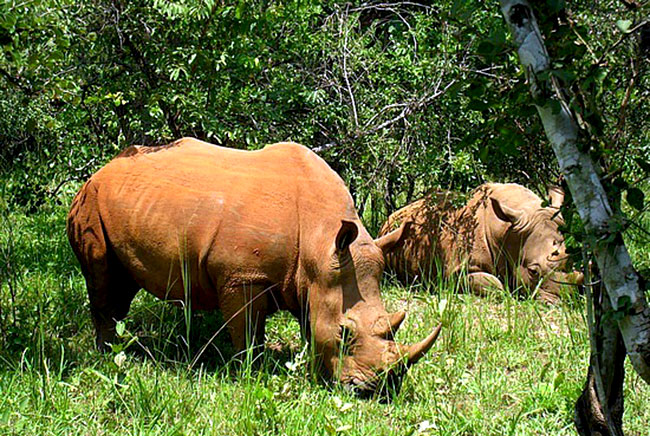
This national park is the last known refuge for the critically endangered Javan rhinoceros. It also protects 57 rare species of plant and 35 species of mammals, including Banteng and Javan lutung. Taman Nasional Ujung Kulon was declared a UNESCO World Heritage Site in 1992 for containing the largest remaining lowland rainforest in Java.
How to get there:
From Jakarta, you can head out to Serang, Banten via the toll road for about 2 hours drive. From Serang, you continue westward to Labuan, Pandeglang for roughly about 2 hours. The main office of Ujung Kulon National Park is located at Jalan Perintis Kemerdekaan No 51. From Labuan, continue to Panimbang, Sumur, and Tamanjaya for a little over another 2 hours.
*The office of Ujung Kulon National Park area II Handeleum and Tamanjaya provide the entrance tickets, insurance, general information about the National Park and all requirements for tourist activities.
8. Taman Nasional Kayan Mentarang
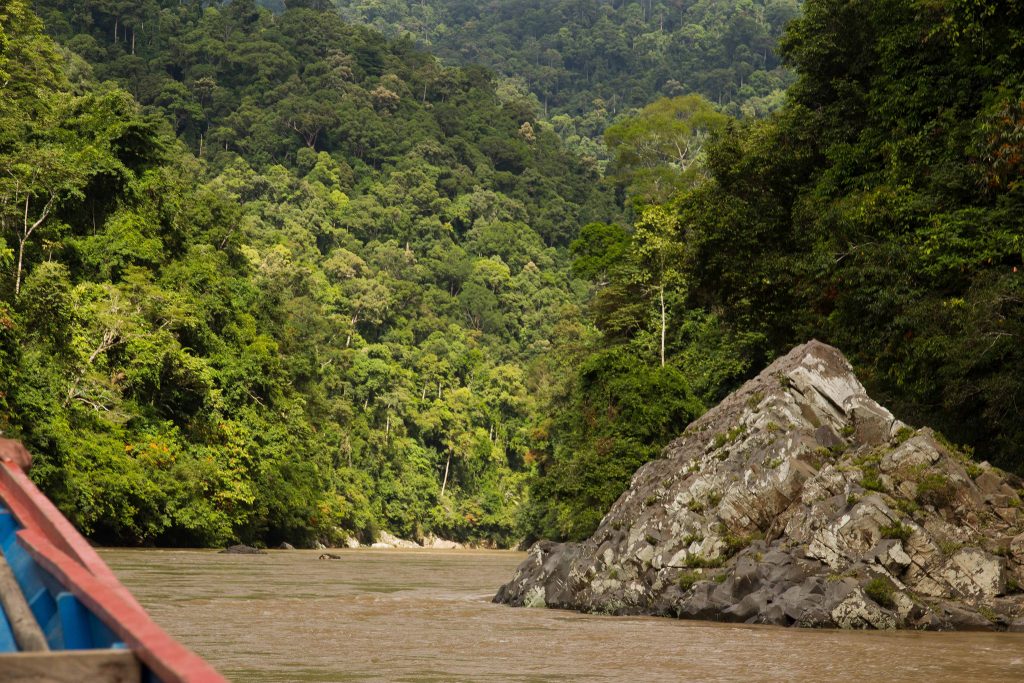
This national park is situated at Malinau, North Kalimantan. The park is central to the WWF Heart of Borneo initiative, which aims to protect the transboundary highlands of Borneo, which straddle the three Southeast Asian nations of Indonesia, Malaysia and Brunei Darusallam. Animals found in the park include the mammals such as proboscis monkey, Bornean gibbon, marbled cat, and many more. Currently there are about 25,000 Dayak people living around the park, from various tribes including the Kenyah, Punan, Lun Bawang and Lun Daye.
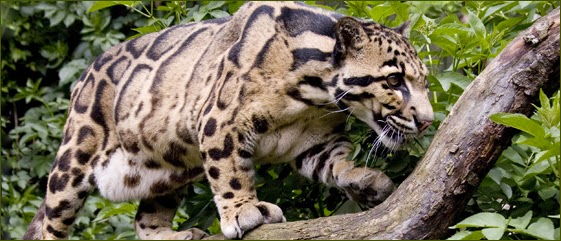
How to get there:
the location of Taman Nasional Kayan Mentarang is very remote and only accessible through public flights on the Samarinda-Long Ampung and Tarakan-Long Bawan routes, or by public riverboats following the Tarakan-Tanjung Selor-Long Pujungan route. If you take the flight to Long Ampung, from there head for Data Dian by boat for around 5 hours.
9. Taman Nasional Kerinci Seblat
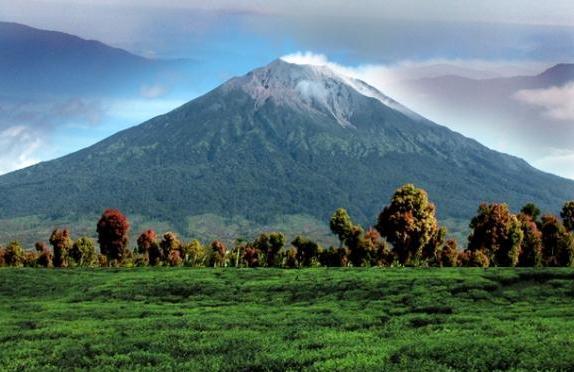
Taman Nasional Kerinci Seblat is one of the largest national parks in Indonesia, protecting almost 14,000 km2 of tropical rainforest in central Western Sumatera running down the Barisan mountain range and its foothills. With that landscape, Taman Nasional Kerinci Seblat has spectacular views in many areas, including the view of Mount Kerinci, the highest volcanoes in Sumatera. The park is also most famous amongst bird-watchers as the best place to see most of the highland Sumatran endemic bird species including the Scheider’s Pitta, Salvadore’s pheasant and Sumatran Cochoa.
How to get there:
Most visitors arrive from Minangkabau International Airport in Padang, West Sumatera which offers quickest access for the Kerinci area of the national park (seven hours). You may also want to call your hotel or homestay in advance to arrange for personal transport for your trip to the National Park.


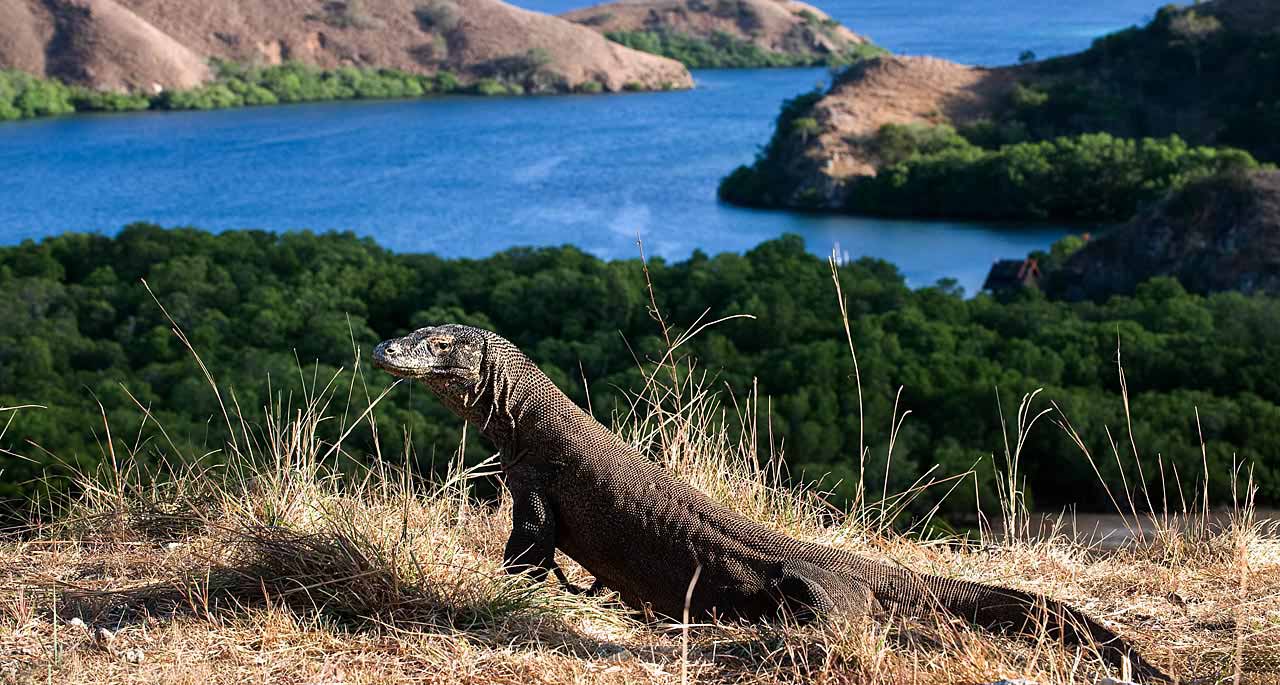 How to Get There:
How to Get There: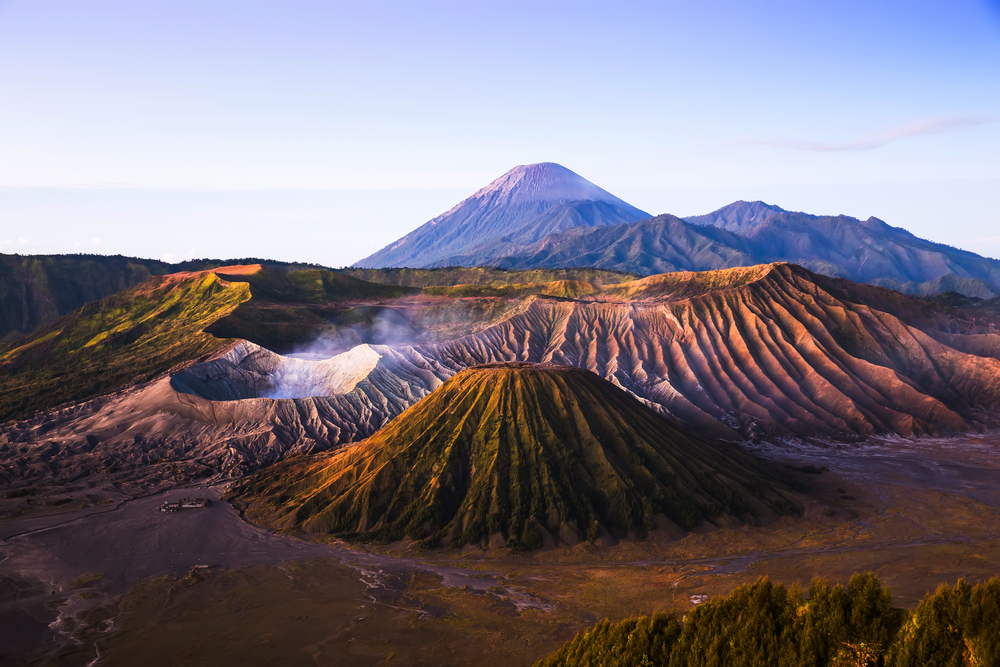 How to Get There:
How to Get There: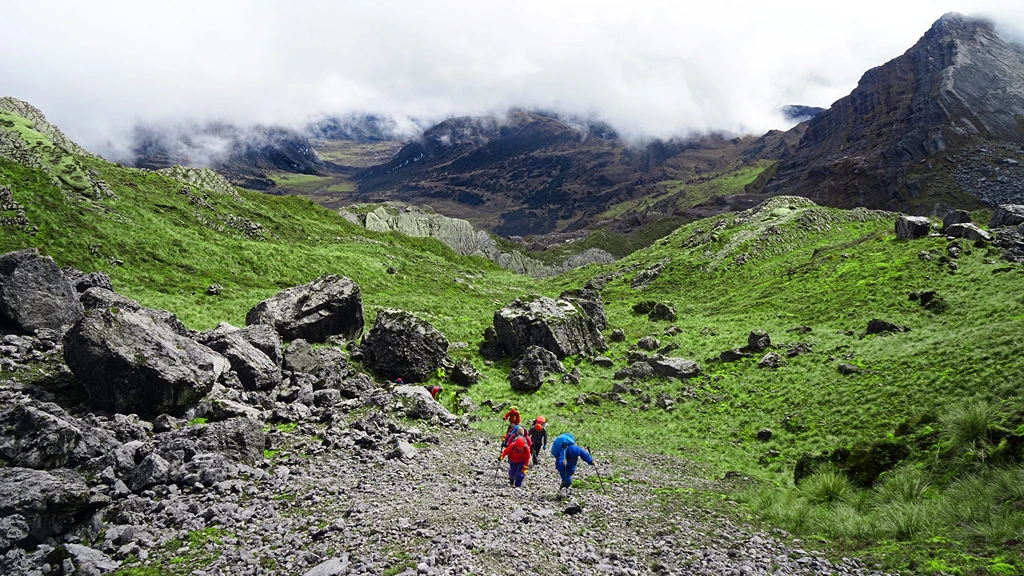 How to Get There:
How to Get There: